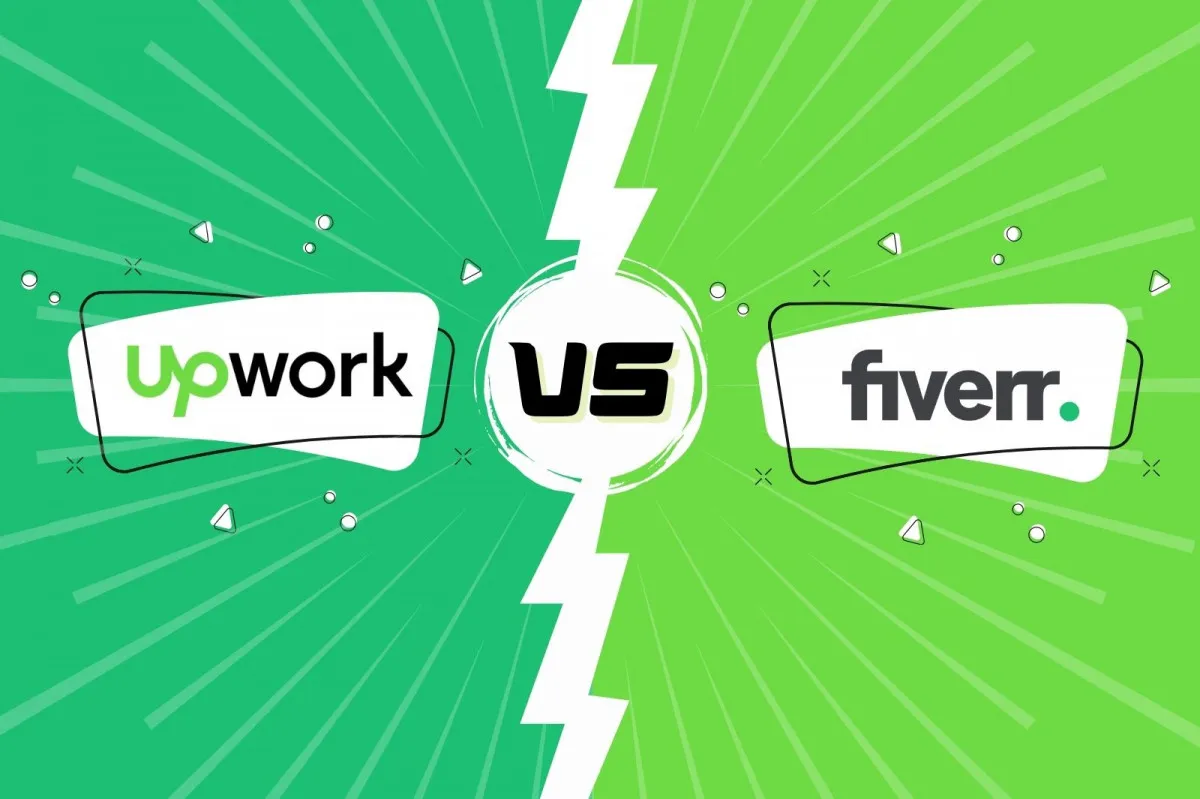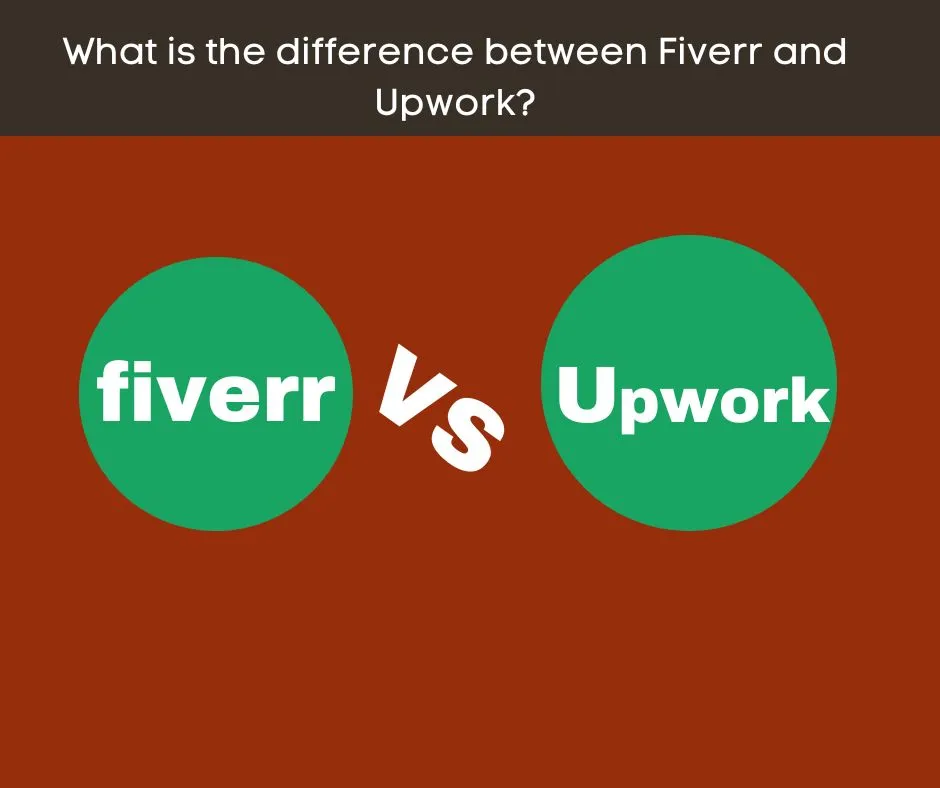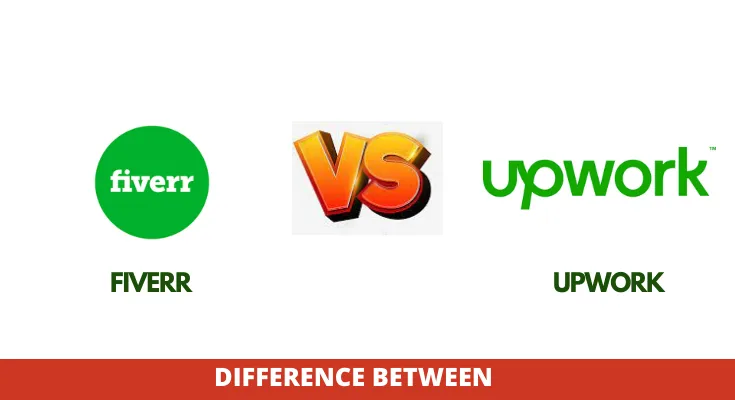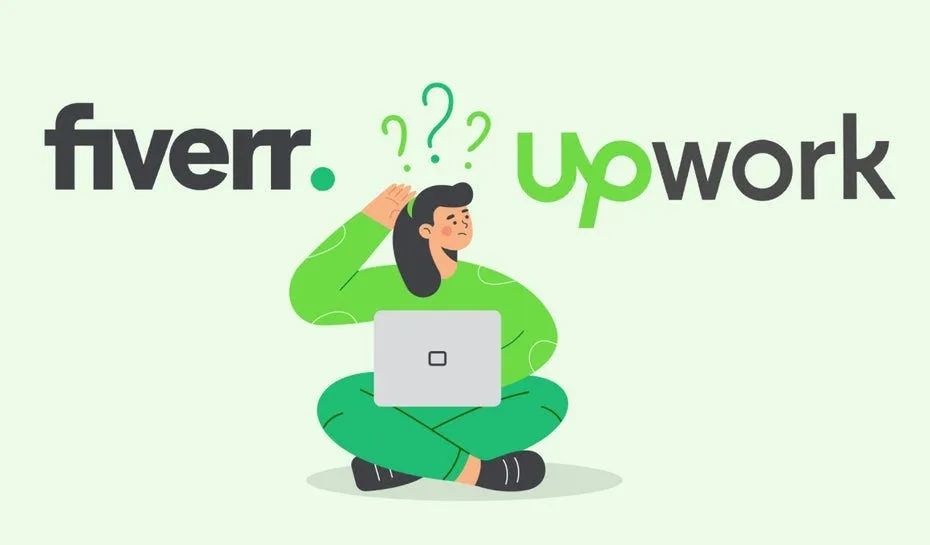Are you trying to decide between Fiverr and Upwork for your freelancing needs? It’s a common dilemma faced by many businesses and freelancers alike. Both platforms offer unique features and cater to different types of projects and skill sets. In this blog post, we'll explore the key differences between Fiverr and Upwork, giving you a clear understanding of which platform might be the best fit for you.
Overview of Fiverr

Fiverr is a bustling online marketplace that connects freelancers with clients looking for a wide array of services. Founded in 2010, this platform has gained massive popularity due to its unique approach to freelancing. Instead of the traditional bidding process found elsewhere, Fiverr allows freelancers to create “gigs” or service listings at prices starting from just $5. Here’s a closer look at what makes Fiverr stand out:
- Gig System: On Fiverr, freelancers offer specific services with detailed descriptions, pricing, and delivery options. This means clients can browse through gigs and choose the one that best fits their needs.
- Affordability: While many gigs start at $5, prices can vary significantly depending on the complexity and expertise required. This allows individuals and small businesses to find budget-friendly services.
- Variety of Services: Fiverr boasts a vast range of categories, including graphic design, writing, digital marketing, programming, video editing, and more. There’s truly something for everyone.
- User-Friendly Interface: Fiverr offers an intuitive interface that makes it easy for clients to navigate through listings, communicate with freelancers, and manage orders.
- Ratings and Reviews: After completing a gig, clients can rate their experience, which helps build trust and credibility for freelancers. This feedback loop fosters a community built on quality service.
In summary, Fiverr is ideal for those seeking quick services at affordable prices, making it a great option for smaller tasks or projects where a clear deliverable is defined. However, it may not be the best choice for extensive projects that require ongoing collaboration. Now that we have a understanding of Fiverr, let’s dive into more details about how it compares to Upwork.
Also Read This: What is Personal Balance on Fiverr?
Overview of Upwork

Upwork is a leading online platform that connects freelancers with businesses seeking various services. Launched in 2015 after the merger of two major freelance platforms—Elance and oDesk—Upwork has carved out a significant space in the gig economy. It offers a diverse range of services, from writing and graphic design to programming and consulting, making it a go-to destination for freelancers of all skill levels.
One of the key features of Upwork is its user-friendly interface that simplifies the hiring process for both freelancers and clients. Freelancers can create a profile that showcases their skills, experience, and portfolio, enhancing their chances of landing gigs. Businesses, on the other hand, can post jobs with specific requirements detailing the skills they need, which allows freelancers to apply directly.
Below are some notable components of Upwork:
- Profiles and Portfolios: Freelancers can build detailed profiles including their work history, reviews, and samples of their work.
- Job Posting: Clients can post jobs, and freelancers can submit proposals to work on these projects.
- Payment Protection: Upwork offers various payment methods, including hourly and fixed-price payments, with protections for both clients and freelancers.
- Collaboration Tools: The platform includes integrated messaging and file-sharing tools to facilitate communication.
Overall, Upwork serves as a comprehensive platform for freelancers and clients, fostering collaborations across various industries and expertise levels.
Also Read This: How Many Gigs Can a New Seller Create on Fiverr?
Comparison of Work Models

When discussing freelance work platforms, it's crucial to understand the different work models they employ. Both Fiverr and Upwork offer unique approaches, catering to various needs based on project type, client expectations, and freelancer preferences.
| Feature | Fiverr Model | Upwork Model |
|---|---|---|
| Service Structure | Gig-based: Freelancers create specific "gigs" or service offerings. | Project-based: Clients post jobs, and freelancers submit proposals. |
| Pricing | Freelancers set prices for their gigs, starting from $5. | Hourly and fixed-price options, negotiated between clients and freelancers. |
| Client Interaction | Less direct; clients browse gigs and place orders directly. | More interactive; clients and freelancers communicate during the proposal process. |
| Feedback System | Reviews based on completed gigs. | Ratings and reviews based on both proposals and completed work. |
In summary, Fiverr is predominantly a gig-based platform, making it simpler for clients to find specific services, while Upwork operates on a project-based model that emphasizes interaction and negotiation. Each model has its strengths, appealing to different types of freelancing experiences and client needs.
Also Read This: How Do Freelancers Get Paid on Fiverr?
5. Pricing and Payment Structures

When it comes to choosing between Fiverr and Upwork, understanding their pricing and payment structures is crucial. Each platform has its own unique approach to how freelancers charge for their services and how clients make payments.
Fiverr: On Fiverr, the pricing model is fairly straightforward. Freelancers create “gigs” that specify what they will deliver and at what price. Typically, these gigs start as low as $5, hence the name Fiverr. However, many freelancers offer packages that can range significantly based on the complexity and expertise required. For example:
- Basic packages: $5 - $50
- Standard packages: $50 - $200
- Premium packages: $200 and above
Fiverr takes a 20% commission from the freelancer’s earnings, which means that if a freelancer charges $100 for a gig, they will receive $80 after Fiverr’s cut. The payment is made in advance, meaning clients pay upfront before the work begins.
Upwork: Upwork employs a different model. Freelancers can set hourly rates or project-based fees. The platform allows for more negotiation between freelancers and clients, which often results in varied pricing based on experience, skill levels, and project duration. For instance:
| Freelancer Level | Typical Hourly Rate |
|---|---|
| Entry Level | $10 - $30 |
| Intermediate Level | $30 - $75 |
| Expert Level | $75+ |
Upwork charges a sliding fee based on the freelancer’s earnings with a client: 20% for the first $500, then 10% for $500.01 to $10,000, and 5% for earnings beyond $10,000. Payment is typically processed after work completion, although clients can fund projects upfront.
Also Read This: How to Make Gigs on Fiverr: A Step-by-Step Guide
6. Types of Services Offered
Both Fiverr and Upwork cater to a wide variety of services, but they each tend to specialize in different areas, attracting different types of freelancers and projects.
Fiverr: This platform is known for its “gig” structure, where freelancers showcase specific services. Some of the most popular categories on Fiverr include:
- Graphic Design
- Digital Marketing
- Writing & Translation
- Video & Animation
- Music & Audio
Most gigs are designed for quick turnarounds and cater to clients looking for one-time or smaller projects. Freelancers often offer packages that allow buyers to select different levels of service or additional add-ons to enhance their original purchase.
Upwork: This platform is more tailored for longer-term projects and ongoing collaborations. Freelancers on Upwork offer services across a wide array of fields, including:
- Web Development
- Software Development
- Customer Support
- Project Management
- Data Science & Analytics
On Upwork, you’ll find a range of professionals from various sectors who prefer to negotiate their project details extensively with clients. Whether it's building a website, managing a social media campaign, or comprehensively analyzing data, the depth of services offered is greater because of the flexibility and lengthy engagements.
Also Read This: How Do I Change My Fiverr Profile Name?
User Experience and Interface
When navigating the freelance marketplace, user experience and interface play a pivotal role in determining how smoothly you can find, hire, or offer services. Both Fiverr and Upwork strive to create user-friendly platforms; however, they approach it in distinct ways that make each unique.
Fiverr is designed around simplicity. The interface is bright, vibrant, and intuitive, making it easy for users to browse through various "gigs." A gig is simply a service offered by freelancers. You'll quickly notice a well-organized layout where you can filter by category, price, and delivery time. The search functionality is equally efficient; you can type in what you need, and relevant gigs pop up in no time. One notable feature is the visual presentation of gigs—with images, videos, and reviews prominently showcased—making it easier for clients to gauge the quality of work.
On the flip side, Upwork has a more complex structure. This is likely due to its focus on long-term projects and specialized services. You will find various tabs for job postings, proposals, and messaging, which may feel overwhelming for first-time users. However, once you get the hang of it, the advanced filtering options allow you to pinpoint exactly what you're looking for. The interface offers a comprehensive dashboard that tracks your engagements, project timelines, and finances—everything you need in one place.
In summary, if you prefer a straightforward and visual platform, Fiverr is for you. But if you’re looking for a multi-faceted marketplace suited for various project types, Upwork has the tools you need, even if there's a learning curve.
Also Read This: How to Promote Fiverr Gigs on Reddit
Pros and Cons of Fiverr
Fiverr has gained a solid reputation in the world of freelance work, primarily due to its unique approach and user-friendly platform. However, like any service, it comes with its own set of advantages and disadvantages. Let's dig into them!
Pros:
- Affordability: One of the best things about Fiverr is that it caters to a wide range of budgets. Freelancers can offer gigs starting as low as $5, making it accessible for small businesses or individuals.
- Simplicity: The platform is straightforward and easy to navigate. Finding a freelance service doesn't get much simpler!
- Diverse Offerings: From graphic design to digital marketing, Fiverr has a plethora of gigs across various fields, ensuring you'll find what you need.
- Quick Turnaround: Many gigs come with express delivery options, allowing you to get your project completed swiftly.
Cons:
- Quality Control: While many freelancers are skilled, the low barrier to entry means that the quality can vary significantly. It may take some time to find reliable talent.
- Service Limitations: Fiverr is primarily designed for short-term projects, which may not suit those looking for in-depth and prolonged collaborations.
- Fee Structure: Fiverr does take a percentage of the transaction, which can affect your earnings if you're a freelancer.
- Communication Issues: Given that gigs are pre-packaged, discussing project specifics can sometimes be limited, leading to misunderstandings.
So, while Fiverr offers an inviting platform for freelancers and clients alike, it's important to weigh these pros and cons before diving in!
Also Read This: How to Become Fiverr Pro Verified: A Step-by-Step Guide
9. Pros and Cons of Upwork
When it comes to freelancing, Upwork is one of the big players in the game. But like any platform, it has its perks and pitfalls. Let's break it down!
Pros of Upwork
- Vast Pool of Jobs: Upwork offers a huge variety of job categories, from writing and design to programming and marketing. You’re likely to find something that matches your skill set.
- Flexible Payment Options: You can choose to be paid hourly or per project, depending on what suits your work style better.
- Client Ratings and Feedback: Upwork allows clients to leave reviews based on your work, which can help you build credibility over time.
- Milestone Payments: Clients can set up milestones for projects, ensuring that you get paid as you complete different phases of work.
Cons of Upwork
- High Fees: Upwork charges a sliding scale fee (ranging from 5% to 20%) based on your earnings with a client. This can be a significant cut, particularly for lower-paying jobs.
- Intense Competition: With so many freelancers on the platform, it can be challenging to stand out and secure jobs, especially when starting out.
- Client Quality Varies: Not every client you encounter will be reliable or professional, which can affect your experience.
- Time Tracking Limitations: If you’re working hourly, Upwork’s time tracking can be fiddly, requiring you to be attentive to how you log your time.
So, while Upwork offers numerous professional opportunities, it's essential to weigh these pros and cons before diving in.
Also Read This: Should I Buy Backlinks on Fiverr?
10. Which Platform is Right for You?
Choosing between Fiverr and Upwork can be tricky—especially since both platforms have unique features that cater to different freelancing needs. So, how do you decide which one is right for you? Let’s explore some key considerations.
Your Skills and Expertise
If you have a specific skill set or service that can be packaged neatly, Fiverr may be the way to go. It’s designed around “gigs,” allowing you to create clear offerings. On the other hand, if you’re a freelance professional who can handle a variety of tasks or larger projects, Upwork might be more suitable.
Preferred Working Style
- Structured Projects: If you prefer working on structured projects with set deadlines and milestones, Upwork's project-based approach might appeal to you.
- Gig-Based Work: If you thrive in an environment where each job is independent (like designing a logo or writing a blog article), Fiverr could be your jam.
Your Budget and Financial Goals
Consider your financial goals and how much money you're hoping to make. Upwork tends to have higher fees for freelancers, especially on initial projects. Alternatively, Fiverr gives you more control over your pricing, but the competition can drive prices down.
Your Experience Level
Are you new to freelancing? If so, Fiverr’s user-friendly interface and straightforward gig listings may be less intimidating. If you're comfortable showcasing your experience and negotiating contracts, Upwork's platform may suit you better.
Ultimately, the choice between Fiverr and Upwork boils down to your personal preferences and professional needs. Assess your options carefully, and you’ll find a path that works best for you!
What is the Difference Between Fiverr and Upwork?
When it comes to freelancing platforms, Fiverr and Upwork are two of the most prominent choices for both freelancers and clients. While both cater to the same purpose—connecting freelancers with gigs—they differ significantly in their structure, pricing, and user experience. Below, we delve into the key differences between these platforms.
1. Work Structure
Fiverr operates on a gig-based system, where freelancers create profiles offering specific services (gigs) at set prices. In contrast, Upwork uses a more traditional job board model, allowing clients to post jobs and freelancers to submit proposals to win projects.
2. Pricing Models
The pricing structures between Fiverr and Upwork vary considerably:
- Fiverr: Services typically start at $5, though freelancers can offer packages at different price points.
- Upwork: Freelancers can set their hourly rates or fixed project pricing, often leading to higher average costs.
3. Payment Methods
Both platforms have their own payment processing methods:
| Platform | Payment Methods |
|---|---|
| Fiverr | PayPal, Credit Card, Fiverr Revenue Card |
| Upwork | Direct Bank Transfer, PayPal, Wire Transfer |
4. Client Interaction
On Fiverr, communication is often limited to predefined gig details, whereas Upwork promotes direct interaction between freelancers and clients, allowing for negotiation and clarification.
5. Skill Variety
Both platforms cater to a wide range of skills:
- Fiverr: Focused on creative and digital services, including graphic design, writing, and video editing.
- Upwork: Encompasses a broader spectrum, from technical skills like programming to administrative tasks.
In conclusion, the choice between Fiverr and Upwork ultimately depends on your specific needs as either a freelancer or a client. Evaluate the structure, pricing, and project requirements before making a decision to ensure you select the platform that aligns best with your goals.



